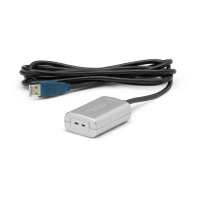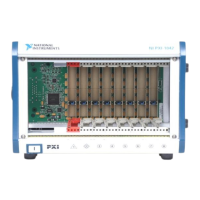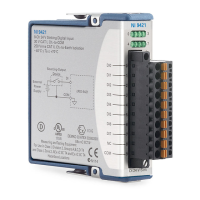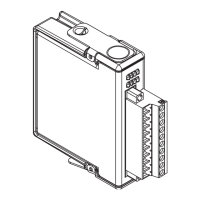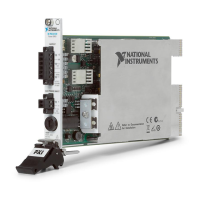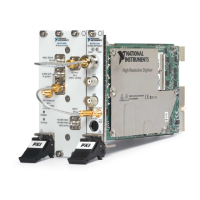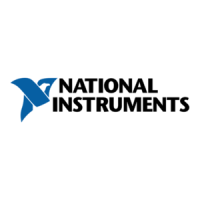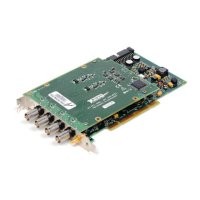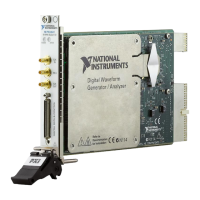Chapter 8 Counters
© National Instruments Corporation 8-15 NI USB-621x User Manual
• Method 2 is accurate for high frequency signals. However, the
accuracy decreases as the frequency of the signal to measure
decreases. At very low frequencies, Method 2 may be too inaccurate
for your application. Another disadvantage of Method 2 is that it
requires two counters (if you cannot provide an external signal of
known width). An advantage of Method 2 is that the measurement
completes in a known amount of time.
• Method 3 measures high and low frequency signals accurately.
However, it requires two counters.
Table 8-2 summarizes some of the differences in methods of measuring
frequency.
For information about connecting counter signals, refer to the Default
Counter/Timer Pinouts section.
Position Measurement
You can use the counters to perform position measurements with
quadrature encoders or two-pulse encoders. You can measure angular
position with X1, X2, and X4 angular encoders. Linear position can be
measured with two-pulse encoders. You can choose either a single point
(on-demand) position measurement or a buffered (sample clock) position
measurement. You must arm a counter to begin position measurements.
Table 8-2. Frequency Measurement Method Comparison
Method
Number of
Counters
Used
Number of
Measurements
Returned
Measures High
Frequency
Signals
Accurately
Measures Low
Frequency
Signals
Accurately
1 1 1 Poor Good
1b 1 Many Fair Good
2 1 or 2 1 Good Poor
3 2 1 Good Good
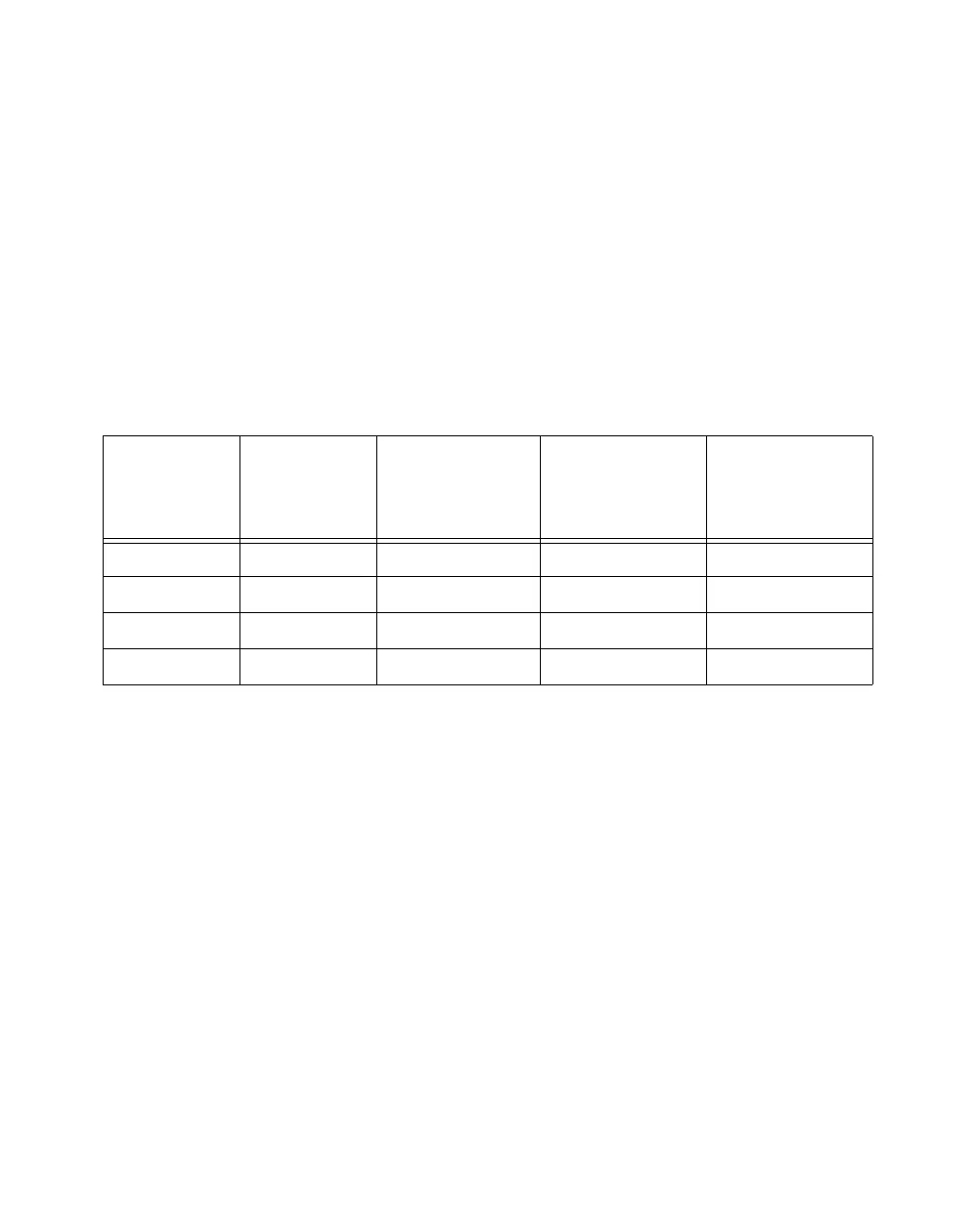